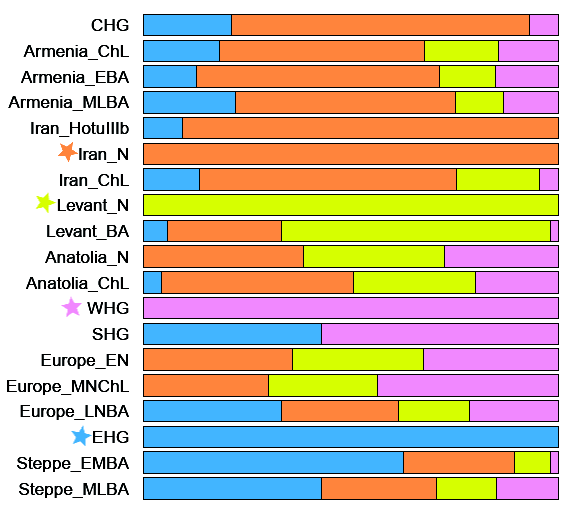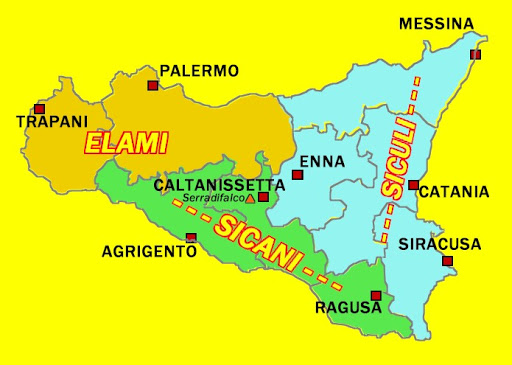I have more and moredoubts about the precise reliability of these admixtures charts. Ithink they depend on the choices made by authors of surveys orpersonal anlysis. Here eg DIENEKES chooses arbitrary references popsconsidered by him as pure, eg WHG, EHG, Iran, Levant... So CHG is nomore a source of Iran neol, and Anatolian farmers are described as amix of Iran neol + WHG + Levant (good bye Dzudzuana and AHG). Why notto choose Anatolian farmers as a pure component and consider Iranneol as a mix of (at least) CHG + Anatolian farmers + ?Arbitrary choices have big importance because they can change thedirection of admixtures (donor/recipient pop).
Let's look at thediverse admixtures charts produced since 2013/2014, concerning samepop's ?
I know all thesenamings and charts hide same reality for the most, but their wronguse can lead people to create wrong historical interactions betweenancient pop's.
Even in this post wesee two results not exactly the same ones for same pop's. I see morereliability in distances as a whole, spite even distances depend toomuch on modelings.
Davidsky likessplitting hairs and contradicts himself sometimes. But his aim istrying to prove that the CHG contained in Steppes auDNA is there frommore ancient periods, for the most, and from North Caucasus andsurroundings, and not from metal ages Iran pop's introgression, if Iunderstood well (not sure). Will he prove it, I don't know. Now thequestion is how to distinct convincingly the more recent origins ofparts of ancestry which came indirectly from the same ancient sourcepop ? How is told CHG or « Iran » of Steppic mixorigin apart of direct CHG or « Iran », eg among Europeanancient tribes and current pop's ? IBD apart, only severe driftcan help to separate them, at first sight. How long time is neededfor this drift to occur ? And If some admixture analysis« sees » Anatolian farmer + WHG ancestry at low levelamong CHG or « Iran » incorporated into Steppic, it cancontradict partly other interpretations « seeing »European LN introgressions into Steppes carrying this Anatolian +CHG. Here only neat enough differences in same places according todates* can help.
*: time -
:indifferent:





